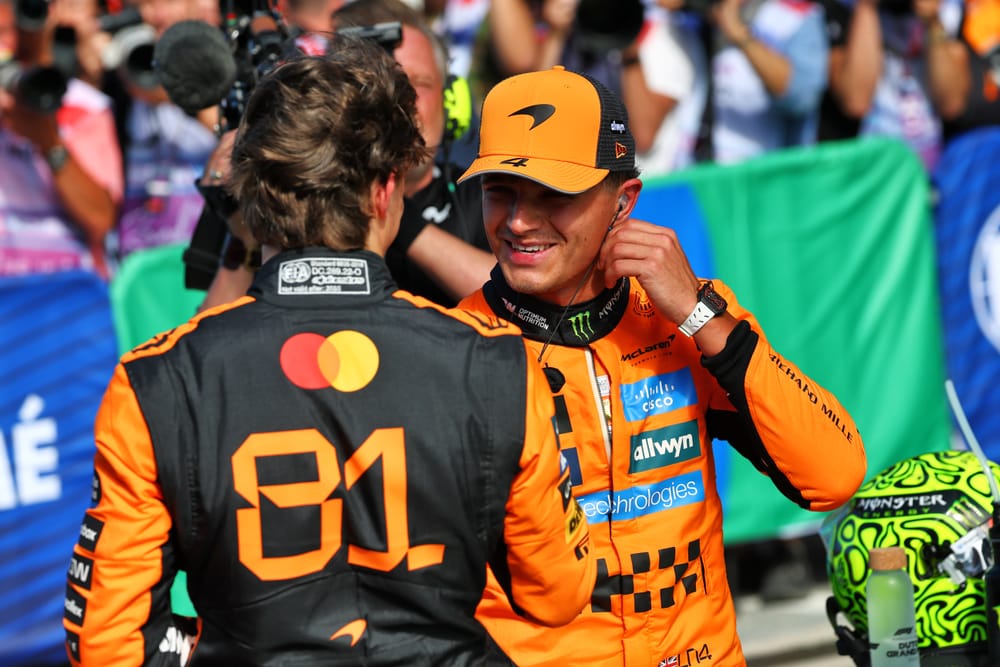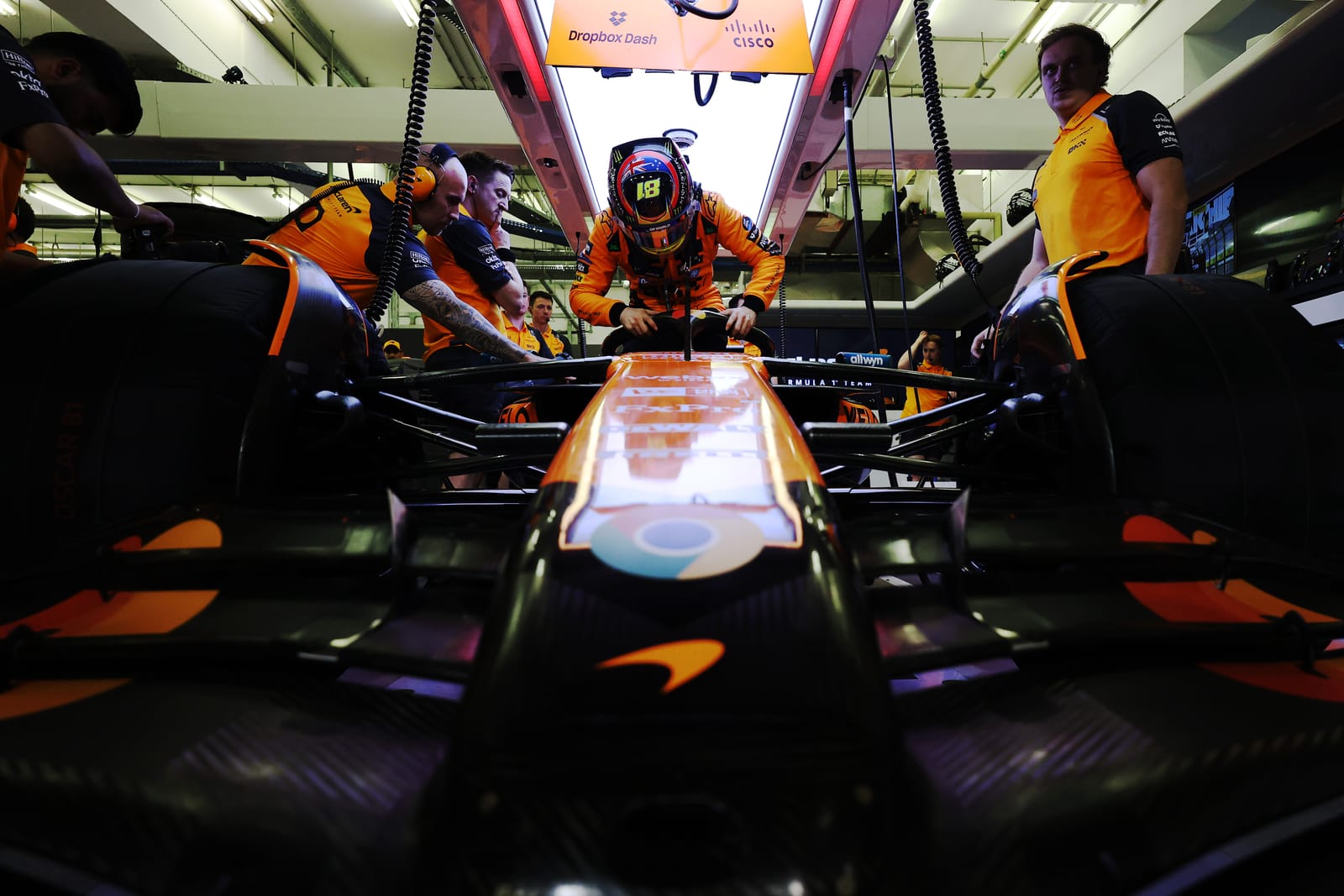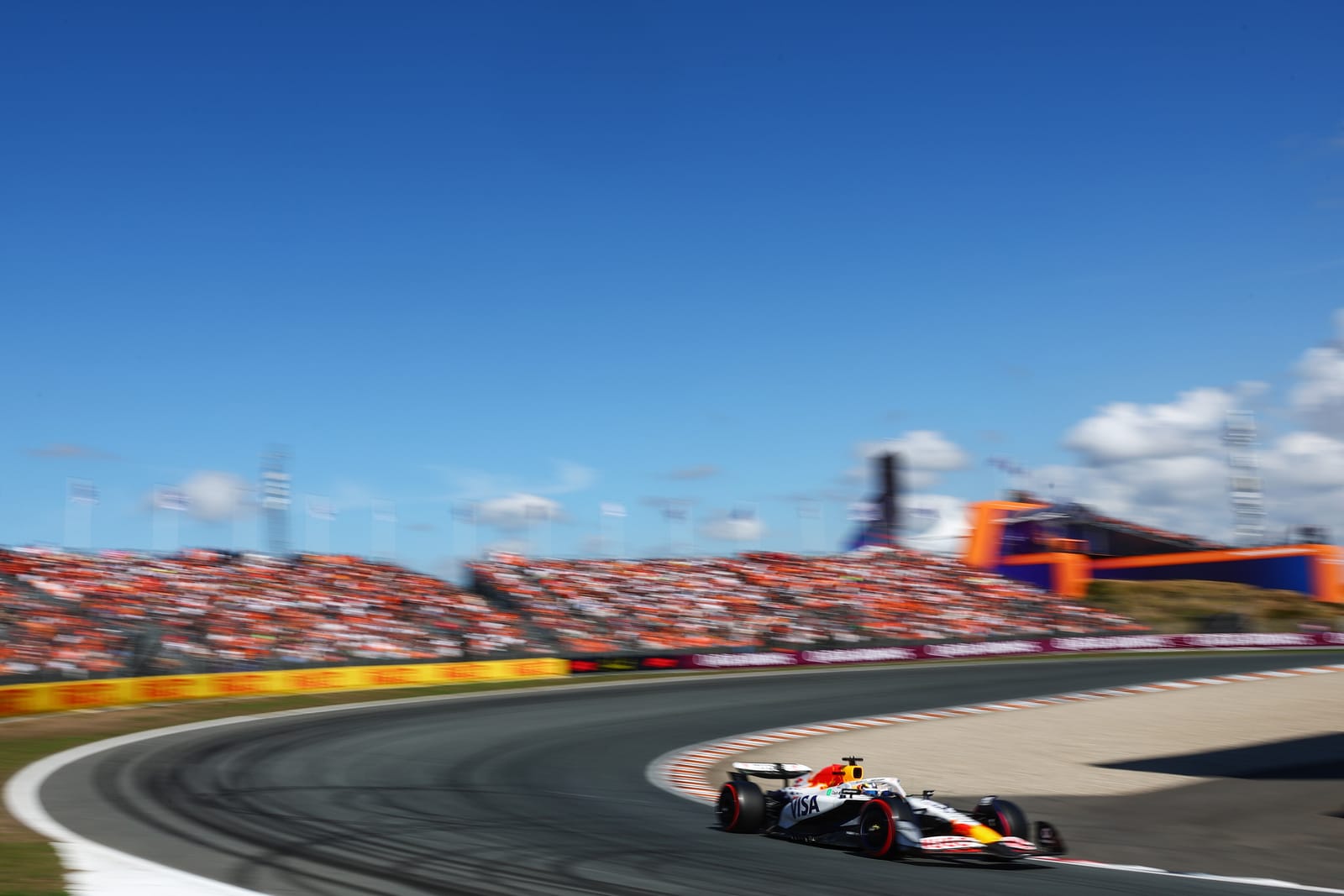Long corners, many of them of low-medium speed, and the usual Zandvoort gusty wind gave McLaren even more of an advantage than usual in Dutch Grand Prix qualifying, further separating the usual two contests: that between the McLaren drivers and that for the honour of best of the rest. Both were super-close, but existed in different territory.
McLaren's world

In the McLaren world, in a car which was running way smaller front brake ducts than the others and less opening out of the bodywork and so exaggerating its natural superiority, it was all about detailed honing of technique. At least it was for Oscar Piastri – who snatched pole from under the nose of Lando Norris by a hundredth of a second, having trailed him significantly through the practices.
Run for run through every practice session, Norris seemed to have around 0.2 seconds over his team-mate here. Piastri’s problem part of the lap was the long, interconnected Turns 9-10: fiddly, third gear, around 80mph, constantly turning and with a big crosswind to further complicate things.
Norris had a much better way with the car through there. Maybe this is where his tailored front suspension, with its greater kingpin inclination and steering feel, was making the difference, allowing him to better judge the overlap of braking and cornering. Maybe. Their lines were quite different here, Lando less extreme in his track width use, making the transition from right to left easier.
But no matter how much Piastri studied the data, he just couldn’t get the car placed there like that. Norris is becoming quite used to starting the weekend faster, then watching Piastri use the data to cut and paste any areas where Norris has the advantage to close up or even surpass. But this time it wasn’t like that.
“I had a problem couple of corners where I just couldn’t go faster,” Oscar related, “but I found corners elsewhere where I was already strong and improved them.”
The change in wind direction from Friday meant there was less of a headwind on the exit of Tarzan so he had to recalibrate there to regain his small advantage. But mainly he’s referring to the banked Turn 3 - where his higher line was working better than Norris’.
“You just send it in there,” said Piastri. “You can take so much speed in. If you don’t do that and turn earlier, you come out at the wrong angle with a lot of turning to do at the end of the corner.”
There was a small Piastri gain at the Turn 11-12 chicane near the end of the lap where he got a cleaner exit. But even on his pole lap, he was still losing around 0.2s to Norris through Turn 9-10.
As they exit the final banked turn Norris is still marginally ahead on the lap but on the run to the line the wind (and possibly a distant tow) was more favourable to Piastri. So although the times were almost identical, they were achieved in quite different ways. That’s how their respective first Q3 laps played out. The track seemed slightly slower on the final runs and although Norris was this time 0.004s faster, neither of them improved their times.
Piastri’s gritty, dig-deep qualities were illustrated once again as he somehow found a way – even around a track at which Norris seems so naturally attuned. It was an impressive display of application.
The rest of the world

Max Verstappen’s Red Bull – after an all-too-familiar thorough rethink on set-up, involving springs, ride heights and ballast placement - was a quarter-second adrift of McLaren here. It was enough to make him best of the rest.
The RB21 just does not like slow turns, especially slow turns which go on a long time. So by the time he arrived at the faster sweeps where its strong high-speed downforce begins to pay back, he was already 0.3s down. But he could hustle it to great effect through the middle sector – and was faster than the McLaren through Turns 7 and 8.
In reality, the car was probably no quicker than the Mercedes, Ferrari or Aston Martin here. But each of those teams and drivers somehow failed to maximise their cars at the critical time.
This created a little gap of opportunity for any overachieving smaller team: step forwards Racing Bulls and Isack Hadjar, who qualified a superb fourth-fastest, albeit 0.3s adrift of Verstappen. That car has exactly the sort of driveability which is so valuable in these sort of inconsistent conditions – and Hadjar’s confident attack did the rest. This was especially impressive after he missed FP2 to a power unit failure. The fresh Honda unit was probably contributing to the car’s speed here, too.
There was almost nothing between George Russell, Charles Leclerc, Lewis Hamilton and Fernando Alonso – they all managed a high 1m09.2s/low 1m09.3s at various times. But Hamilton and Alonso did their best times in Q2.
Russell talked of how atypically variable things were: “You can find maybe 0.4s from one lap to the next not really doing anything different. If you push just a little too hard and get the tyre temperatures to spike you can lose the lap whereas if you drive 1% below the limit and you don’t slide then you get a laptime.”
But where that limit is, of course, is constantly moving, with the wind. Alonso, limited to just four sets of new softs rather than the five of the Ferrari and Mercedes drivers, didn't get the feel of the Aston Martin in his final Q3 lap the way he had in Q2.
Verstappen’s soft tyre usage was interesting, too, in that he has retained a new set for the race. Which could make him even more of a handful than usual down to Turn 1.





